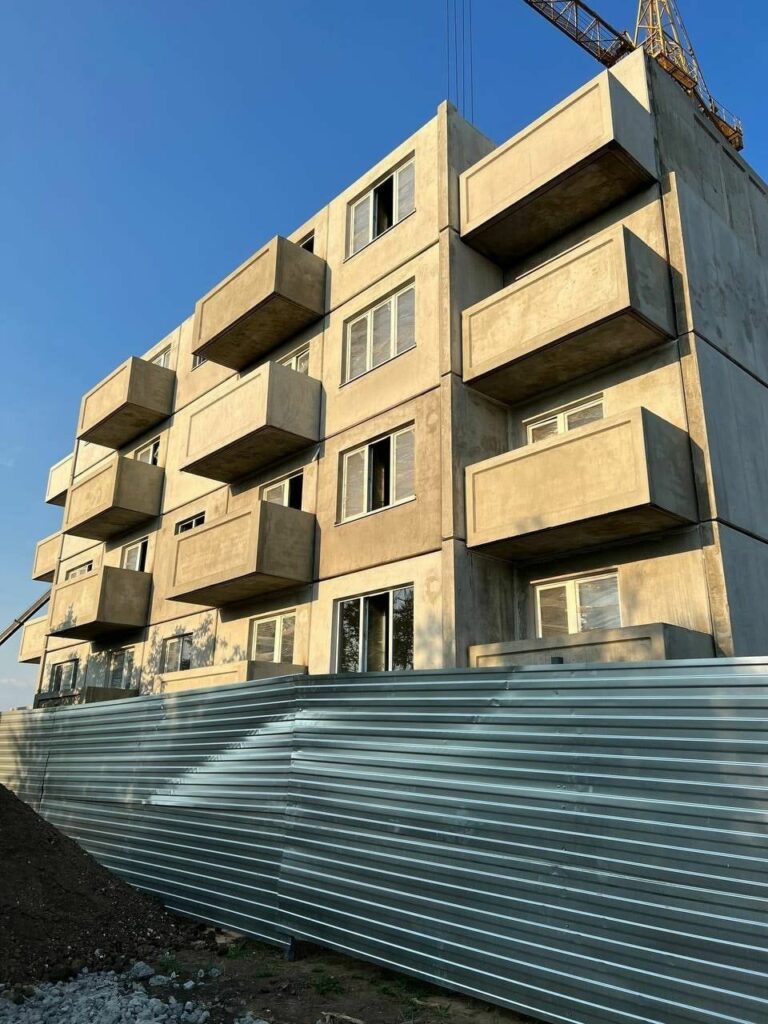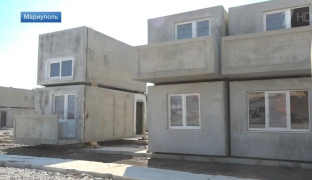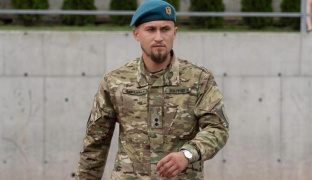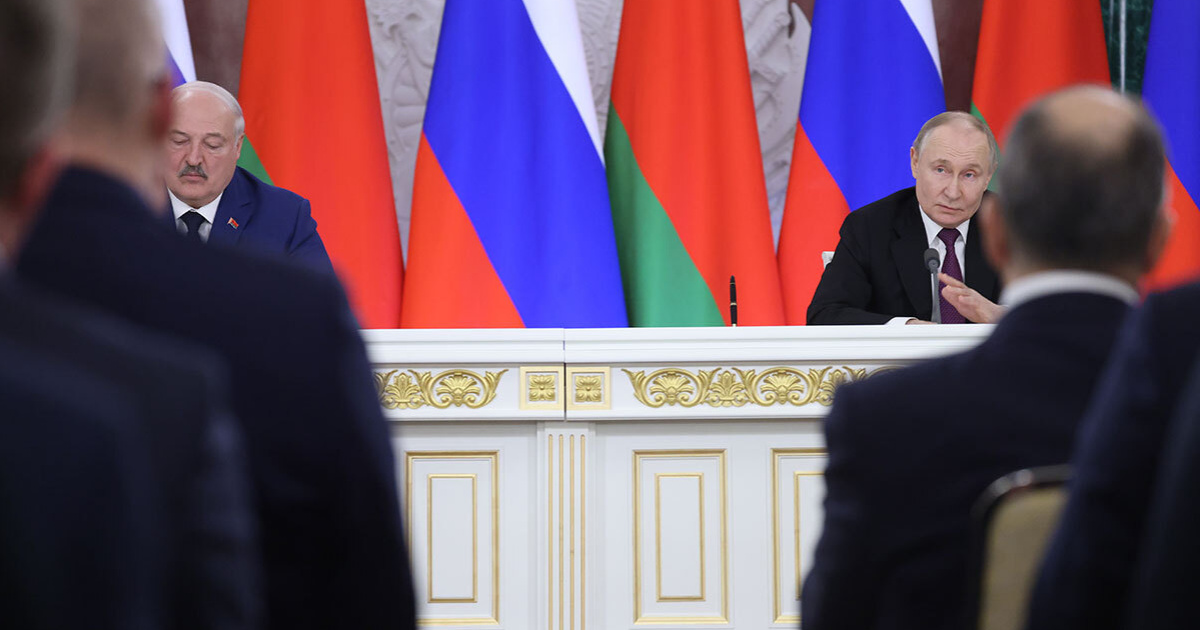The “liberation” of Donbas, which russian propaganda has tirelessly repeated since February 2022, turned into total destruction of everything the occupier set foot on. No surprise that amid the bombed-out Ukrainian towns and villages, a myth had to be quickly implanted in the public consciousness: “russians don’t abandon their own and everything will be rebuilt better than before”.
“Tear it down to the foundation, and then…”
However, time went on, and the ruins and ashes remained just that – ruins and ashes. More and more destroyed settlements were being added to the “waiting list” under the cheerful promises of a soon-to-come “rebirth”, all of which were also promised to be rebuilt. But slowly, the occupation authorities started backpedaling. The first to fall was Popasna in the Luhansk oblast. The occupation authorities of the “LNR”, or rather their russian handlers, were forced to admit that the city had been “liberated” without a single stone left standing. “The authorities of the Luhansk People’s Republic are leaning toward not rebuilding the city of Popasna. It’s been almost completely destroyed”, - the head of the “republic” Leonid Pasechnik told journalists in August 2022.
In the summer of 2024, his fellow collaborator Denis Pushilin stated that many villages in the Donetsk oblast destroyed by russian aggression would also not be rebuilt. “Small settlements that are now being liberated... As for reconstruction plans, we will consider the population numbers of these settlements. Some of our villages are extremely small, so it’s possible that, within the framework of master plans, the territory will be restructured, and possibly merged with nearby, larger populated areas”, - said the head of the “DNR”.
But these revelations were more of an exception – the kremlin’s propaganda machine continues to churn out the myth of a bright future for a Donbas “risen from the ashes”. It’s often emphasized that so-called “sponsorship aid” is being provided to the occupied Donbas (which, by the way, is true) by all regions of the aggressor country. The focus, of course, is on the most pressing issue – housing.
The housing issue
The first attempt to solve this critical problem was compensation payments for homes lost and destroyed in the war. They decided to pay 35,000 rubles per square meter, later raising it to 45,000. Naturally, buying an apartment with that money was impossible – in the shortage of housing created by the “liberators”, prices per square meter shot up sharply. Today, that price reaches – and sometimes exceeds – 100,000 rubles...
So, the next statement from the occupation authorities was a promise to build new homes, in which all those in need would receive compensation apartments. Obviously, there are so many towns and villages where nearly the entire housing stock was destroyed that fulfilling this promise in full is impossible. So they decided to create a sort of showcase of the "russian world" in Mariupol. Russian and local journalists happily reported how, in a nearly completely destroyed city, new buildings were springing up like mushrooms thanks to the efforts of the “sponsors”. Some residential areas were constructed in a record few months. Russian builders used modular technology, where ready-made concrete room blocks were stacked together like cubes into buildings, the ugliness of which was then masked with bright plaster.


And still, these were apartments: free, just as promised, for Mariupol residents who had lost their homes. Though those who had already received monetary compensation lost the right to get one...
So, russian propaganda began showing a colorful picture of happy new tenants settling into their new homes. But it soon became clear that the houses were built not only quickly but poorly. Videos started circulating online showing the lucky new apartment owners horrified to find jamming doors, cracks in the ceilings and walls, bulging floor tiles…
Maybe that’s why, when a man resembling putin suddenly visited the Nevsky district of the city to talk to local residents, someone, daring to look a gift horse in the mouth, shouted out the truth instead of thanks: “This is all just for show…”
But it soon turned out that crooked floors and doors in the compensation apartments weren’t the biggest problem. It was revealed that the compensation housing was being built on the outskirts of Mariupol, while in place of the destroyed homes – often in the city’s central districts – commercial buildings were being erected with solid market value per square meter. Naive residents started to complain… First to their “mayor” Oleg Morgun, then to the head of the “DNR” Denis Pushilin, and eventually to russian officials and deputies. Only one well-known collaborator, Oleg Tsaryov, responded to their petitions. The former Verkhovna Rada MP continues pretending to be a defender of the people, so he loudly expressed outrage over what was happening. “I’m receiving a lot of letters about unfairness in the distribution of apartments in Mariupol. People write that houses (or what’s left of them) in the city’s best locations are being demolished, replaced by buildings for sale, and former residents are either left without housing altogether or given apartments in new buildings on the city’s outskirts. Their registration in their own homes is automatically canceled the moment the house is torn down. Since there are so many complaints, it’s fair to conclude there’s enough reason for some deputy, senator, or official to step in”, - Tsaryov admitted, acknowledging that his VIP traitor status allows him only to make loud statements.
Someone else's roof
Naturally, none of the shamed russian “deputies, senators, or officials” responded. So people began massively recording video appeals to… putin. The chances that the russian dictator would see and hear the cries of his “subjects” seemed close to zero. But – oh, miracle!
The master of the kremlin ordered that all Mariupol residents who had lost their homes be provided with apartments near their previous places of residence. The puppet authorities of the "DNR" snapped to attention, although they knew perfectly well that fulfilling the “benevolent tsar’s” order was practically impossible. The thing is, the construction of compensation housing, originally launched to promote the arrival of the “russian world” in Mariupol, had seriously slowed by the fourth year of occupation. According to the “mayor” of the city, Oleg Morgun, 65 apartment buildings were constructed between 2022–2024 (an average of 20 per year), but in 2025 they promise to build only six free housing buildings. That’ll be just 600 apartments.
But putin suggested a workaround and ordered people to be settled in so-called “ownerless” apartments, i.e., those stolen from rightful owners. However, neither in the "DNR" nor in the "LNR" did anyone plan to give confiscated housing to ordinary people. For example, in Luhansk, “MPs” passed a “law” stating that “up to 35% of the total area of ownerless residential premises” could be transferred to the federal property of the aggressor state. Up to 30% “may be transferred to the property of the republic”. The remaining 35% stays under “municipality” control. So theoretically, those are the ones that were supposed to be added to the compensation housing stock. However, the same “law” states that above all, the “ownerless” apartments would be given to judges of the fake “LNR” courts and other officials “needed by the young republic”.
The authorities of the occupied Donetsk oblast had similar plans for the stolen apartments. According to the head of the “DNR”, the seized housing would be a flexible resource to resolve the housing issues of “special military operation” participants, families of fallen occupiers, and of course, their own and incoming security forces.
But there was no way around it – putin’s order had to be carried out. So the “republics” launched an accelerated inventory of the housing stock and began hastily identifying “ownerless” apartments. However, many residents of occupied Donbas are extremely reluctant to move into someone else’s ancestral home. They fully understand the high likelihood that the rightful owners (once they return to Mariupol or any other occupied city) will demand their property back, which (even under russian law) would at best lead to long legal battles.
Life on credit
So, neither the payouts for lost housing, nor the construction of compensation homes, nor the magically appearing “ownerless” apartments in relatively large numbers solved the problem. And then the kremlin authorities, followed by the local ones, pulled out their trump card: preferential mortgages, at just 2% per annum…
Donetsk and Luhansk “official” information resources became flooded with announcements about land being allocated without auctions for investment construction and about russian developers entering the territory of the “DNR”/“LNR”. In a number of cities across the occupied Donbas, especially in Mariupol, construction boomed, and the first commercial housing projects already appeared.
But this entire construction boom is tied exclusively to mortgages, that is, buying apartments on credit. Yes, it’s very preferential, but the proposed price per square meter makes it unaffordable for the majority of currently homeless locals in the region. It is expected that in Donetsk, Mariupol, Luhansk, and even in relatively small towns, housing prices will be higher than in neighboring russian Rostov-on-Don. Tatyana Buryak, who calls herself the “first deputy minister of construction and housing and communal services of the LNR”, frankly warned residents of the occupied Luhansk oblast that even with the onset of mass construction, “prices will still be at Rostov level, plus a little more”. She urged people to count on at least 100,000 rubles per square meter.
These forecasts were confirmed on March 4, 2025, by the head of the “LNR” Leonid Pasechnik. Speaking at some forum titled “Integration 2025. Prospects for the Development of Russia’s Historical Regions”, he admitted that “housing prices here are very high; we probably exceed the Rostov region in some respects”. “A huge number of people have returned to the republic... Many (russian – OstroV) specialists who come to the LNR for work also decide to stay in the republic”, - Pasechnik said.
By the way, judging from everything, the rather extensive construction in occupied Donbas is an element of the kremlin’s resettlement policy, aimed at replacing Ukrainian citizens with outsiders arriving from all over russia. The thing is, the mortgage program in the occupied territories of Ukraine is different from the russian one. In russia, housing can only be bought on mortgage in the buyer’s region of residence. But the mortgage in the annexed oblasts of Ukraine is intended for incoming russians who want to settle in the “new territories”. “Anyone from any region of the country who wishes to settle in the new (annexed – OstroV) territories can build a house or buy an apartment in Luhansk, Donetsk, Melitopol, Henichesk, or any other settlement of the four subjects”, - stated a message from the finance ministry of the aggressor state.
Naturally, Ukrainians who ended up in the occupied territory and lost their homes due to russian aggression can also take out a mortgage. But even at 2% per year, they will not be able to afford the housing at the developers’ proposed prices – the maximum mortgage loan amount is 6 million rubles. That’s roughly the cost of a one-room apartment still in the foundation stage.
According to Maksim Zhukovsky, deputy “minister of construction, architecture, and housing and communal services of the DNR”, 750,000 square meters of housing were built in 2023–2024, which equals roughly 7,500 apartments at 100 square meters each. In 2025, they promise to commission the same amount. Who exactly will be buying these rather expensive apartments and with what money remains a mystery. Currently, the purchasing power of residents of uncontrolled Donbas, including the russians who moved in from all remote corners of the country, is extremely low. As of early 2025, russian banks had issued around 1,500 loans across the entire territory of occupied Ukraine. Of those, 70% – just over a thousand – were in the “DNR”…
By Yurii Bovkh, OstroV




